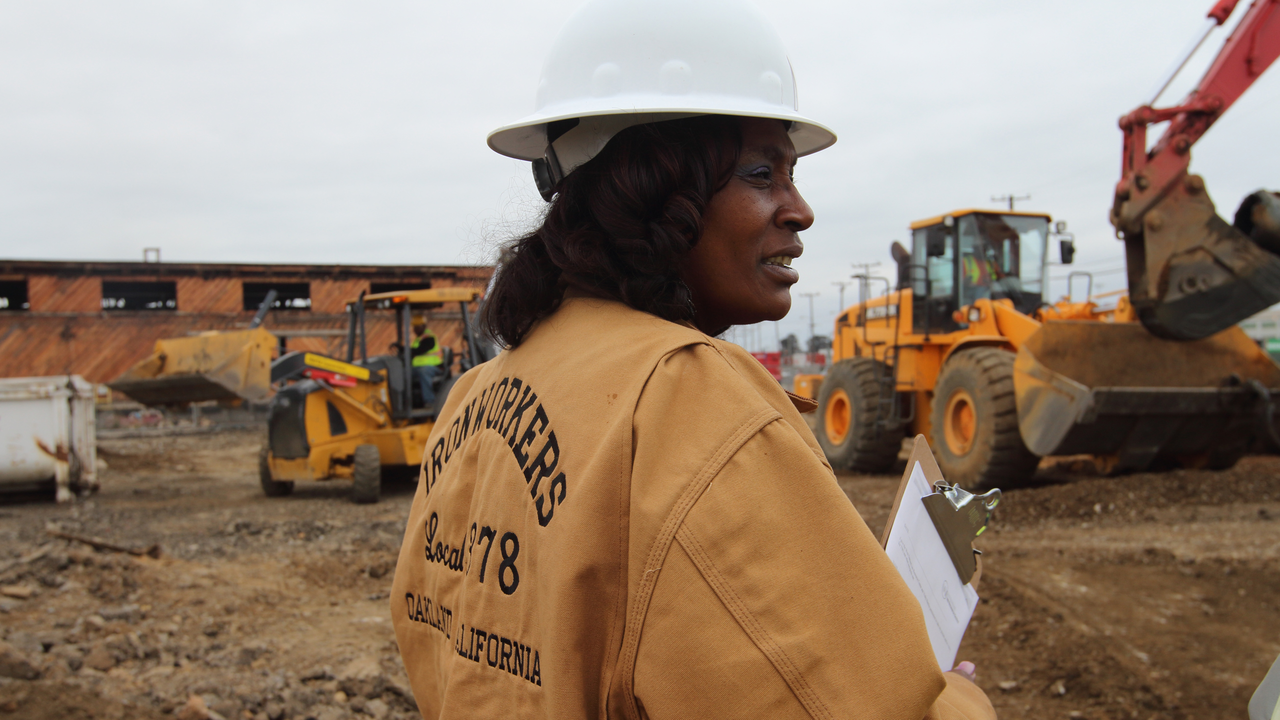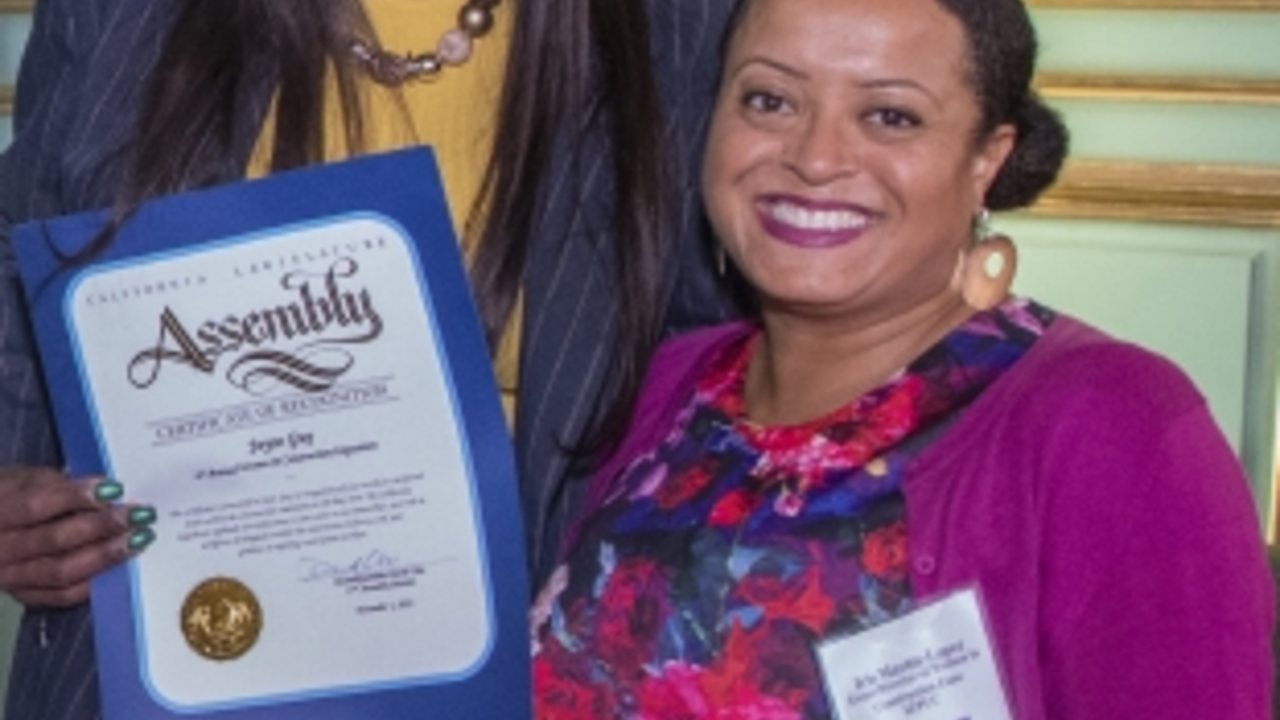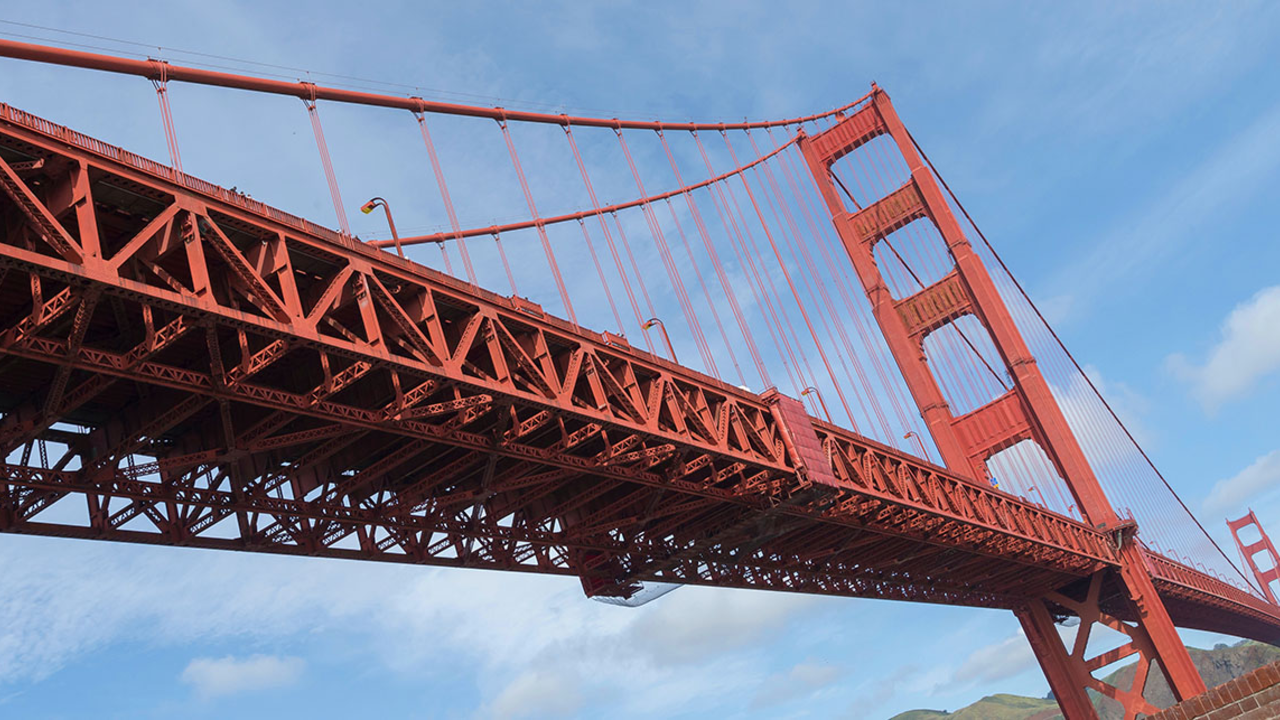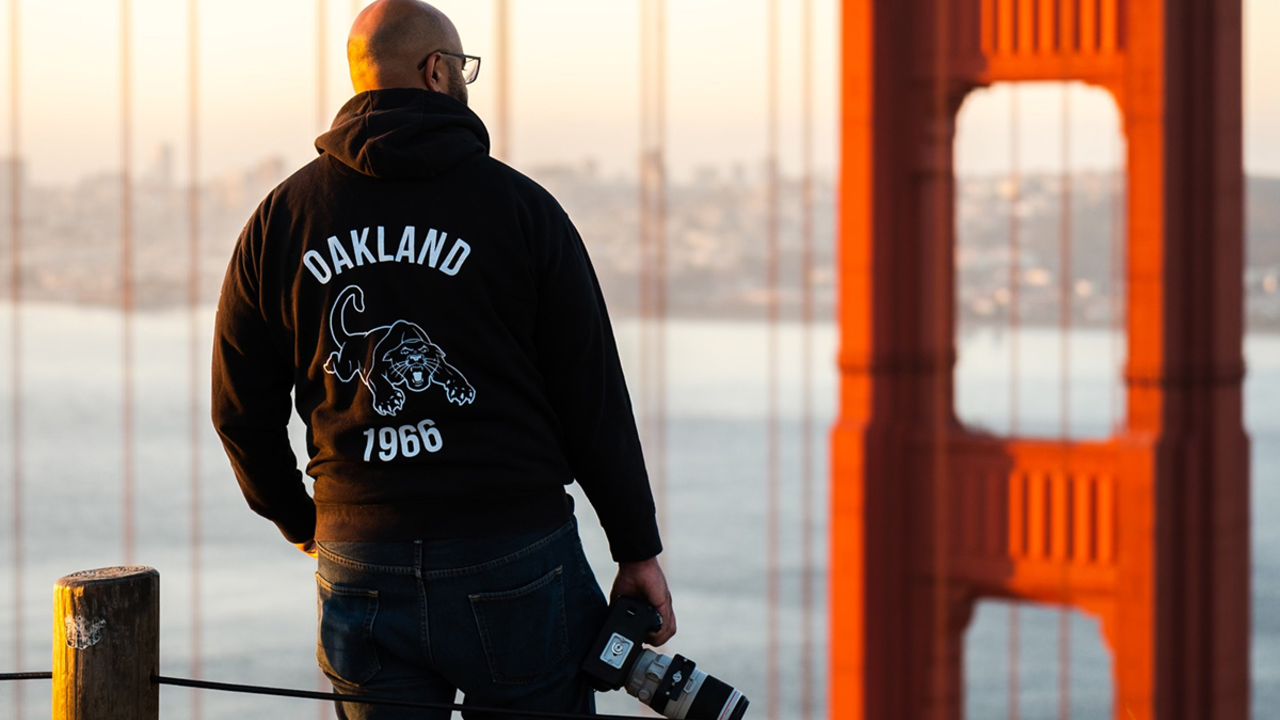Building bridges, breaking barriers: How Joyce Guy battled racism, sexism to stand atop the Golden Gate Bridge

Photo by Victoria Hamlin
The origin story of the Golden Gate Bridge is dominated by tales of the architects and designers who were given the opportunity to dream up the structure. The workers who installed and later maintained the cables and trusses, the bolts and the paint, are not often credited.
In the book “Building the Golden Gate Bridge: A Workers’ Oral History,” Harvey Schwartz interviews several workers who left their mark on the Golden Gate including Joyce Guy, who worked as a welder on the bridge after it was built. The following quotes come from Schwartz’s full interview with Joyce, the “Joyce Harris Oral History” audio recording, from the San Francisco State University Labor Archives and Research Center at the J. Paul Leonard Library.

“I got to work on the Golden Gate Bridge for a few days. That was the bridge they said could never be built. I was privileged to go all the way to the top and stand there. I was just amazed at the structure,” said Joyce. “It’s a structure that people know all over the world.”
Joyce loved to build things from a young age. Her father was skilled in many types of trades—she would work with him on their car in their Oakland garage and help him with jobs like building fences. In high school her mother signed her up for a typing class, but she quickly transferred into the auto shop class. From there, she proceeded to enroll in the Job Corps.
“I was in the Job Corps in Oregon and that’s where I really got into welding and being fascinated in construction.”
Joyce graduated from the Job Corps and high school armed with passion, aptitude, and certifications for welding. Despite her preparedness, she would face considerable barriers to finding a job quickly in the field following graduation.
“As far as construction was concerned, as a female, there was nowhere for me to go, especially being about 18. People weren’t looking at me as a viable entity to be employable, even though I had welding certifications.”
Facing closed door after closed door while looking for welding jobs, Joyce decided to join the military. She played on the Army women's basketball, volleyball, and softball teams. She was stationed for several years at Fort Lee (Va.), Fort Knox (Ky.), and Fort Jackson (S.C.) before returning to the Bay Area in search of welding jobs.
“Someone finally hired me into the shipyards in San Francisco [in Hunters Point]. That was like heaven because I was working in San Francisco for the sheet metal workers. I got the job by going through a program called ‘Women in Apprenticeship.’”
One job led to the next, and eventually Joyce found herself working on bridges around the Bay Area—the Bay Bridge, the San Rafael Bridge, and the Golden Gate Bridge.
“I love bridge work... it’s not just about building them and working construction, it’s that I’m responsible for other peoples’ lives.”

Along the way, Joyce earned a degree in Social Sciences from the College of Alameda, joined the Sheet Metal Workers Union, and raised two sons. One of her sons, Dontrelle Willis, became a Major League Baseball pitcher for the Florida Marlins, Detroit Tigers, Arizona Diamondbacks and Cincinnati Reds.
She fell on the job twice—first 27 feet and again 16 feet. She ascended through the ranks to become a foreman on jobs such as the San Rafael Bridge.
“I’m a Black woman. [I thought] there is no way that in this trade they will ever let me be anybody’s boss. But over the years I ran quite a few jobs.”
Word traveled of Joyce’s ability to inspire teams and the Building and Construction Trades Council of California recruited her to educate others about construction apprenticeship programs. In this chapter of her professional life, she traveled all around Northern California giving talks to prisons, churches, and high schools, sharing information that she wished someone had shared with her when she was looking for opportunities.
Defying the sexism and racism that she faced throughout her career, Joyce found her own way as a welder, forging many moments of joy and fulfillment for herself and others.
“I miss the iron. I miss it a lot more than people could ever realize. I learned more about me. My abilities to climb. What I will and wouldn’t do. I learned to get over things that I didn’t have confidence I could do."
Now, Joyce is the Executive Director of the West Oakland Job Resource Center, a non-profit organization serving low and moderate income job seekers in the greater Bay Area with employment training, financial coaching services, assistance in securing employment and advancing in the construction and TDL industry.
When reflecting on her time working bridges, including the Golden Gate, Joyce said, “A lot of people don’t get injected into history that way, but we will always be a part of it.”
References
Schwartz, Harvey. (2015). Building the Golden Gate Bridge: A Workers’ Oral History. University of Washington Press.
Schwartz, H. (2008). Joyce Harris Oral History. Flyaway Productions. San Francisco State University, Labor Archives and Research Center.


